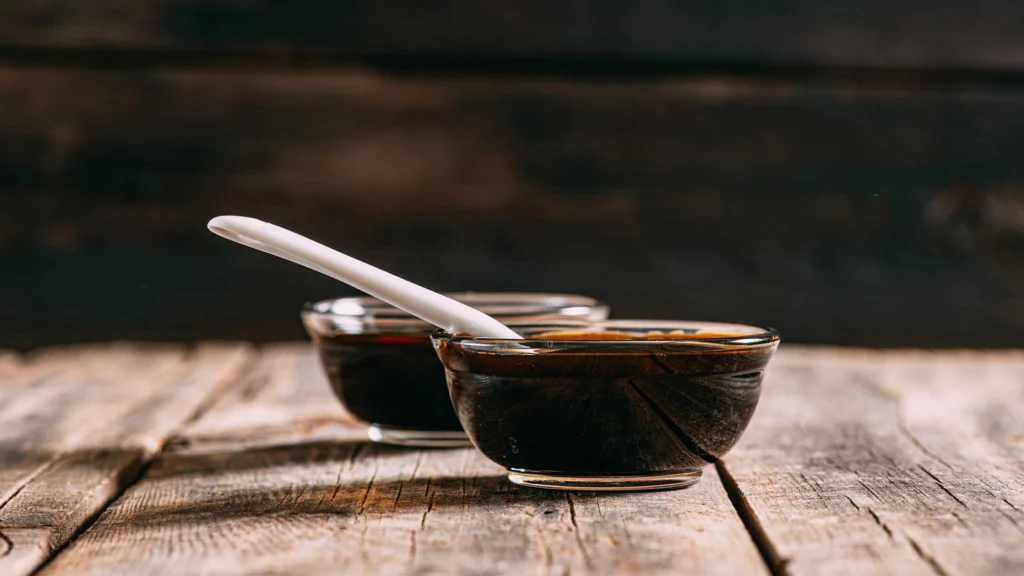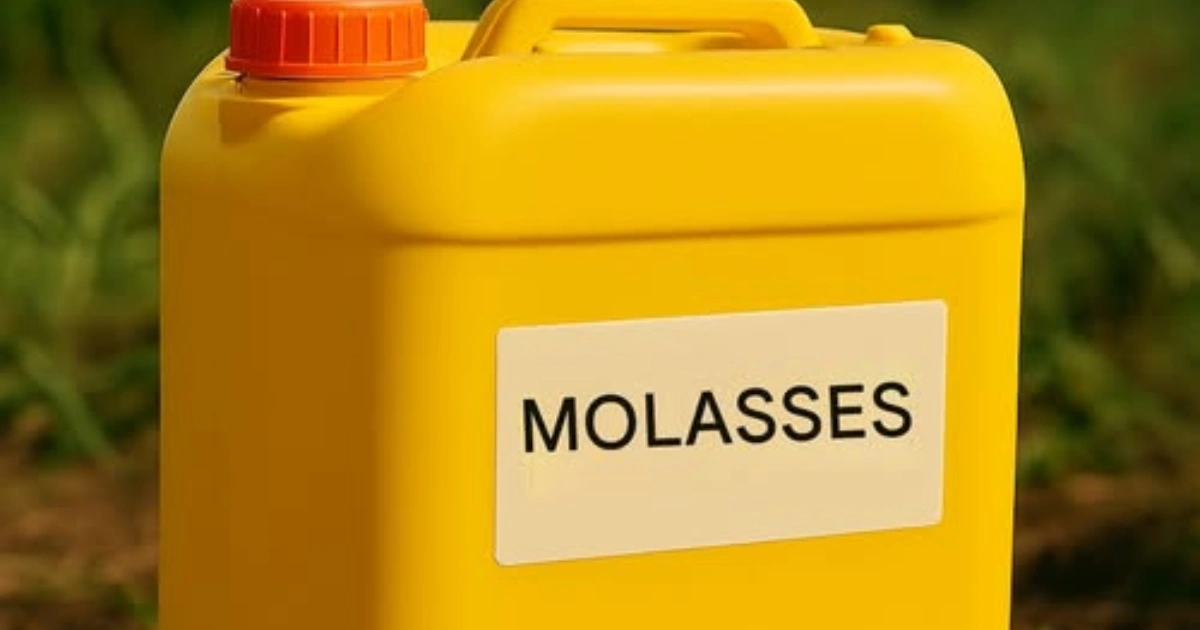Why Every Green Thumb Should Know About Molasses
Molasses is more than a baking ingredient—it’s a secret weapon for healthy, vibrant gardens. This thick, dark syrup is a natural byproduct of sugarcane processing, created after sugar crystals are extracted. What remains is a nutrient-dense liquid rich in calcium, magnesium, potassium, iron, and organic sugars.
Used properly, molasses energizes soil microbes, enhances compost, and conditions tired earth into thriving, fertile soil. It’s also safe, budget-friendly, and perfect for sustainable gardening practices.
Looking for more organic growing techniques? Be sure to check our article on natural garden defenses—it’s packed with companion ideas that pair beautifully with molasses use.
How Molasses Supercharges Soil Microbial Life
Molasses acts as a powerful microbial stimulant when added to soil or compost. Here’s what happens when you use it:
- Provides instant energy to beneficial bacteria and fungi
- Speeds up the breakdown of organic matter in compost and soil
- Boosts nutrient availability and absorption for plants
- Strengthens the soil food web, encouraging earthworms and helpful organisms
Just a few tablespoons of molasses diluted in water can wake up your soil’s biology, helping it process nutrients more efficiently and support lush plant growth.
Molasses in Organic Fertilizers and Compost Teas
Molasses plays a starring role in many homemade organic fertilizers. In compost teas, its sugars act as food for beneficial microbes during the brewing process. When applied to soil or as a foliar spray, these teas become supercharged with life.
Molasses is also essential in biofertilizers like “biol,” where it supports fermentation and enhances the plant-boosting effects. And in worm compost systems, a splash of molasses helps energize the microbial life within worm leachate.
If you’re making your own compost tea or fermented feed, adding molasses is one of the easiest ways to increase its effectiveness. Explore how we use it in our guide on natural garden defenses for more ideas.
Molasses as a Soil Conditioner and Root Enhancer

Regular molasses application offers long-term benefits for your garden soil:
- Loosens compacted or overworked soil
- Improves water retention and aeration
- Encourages deep, healthy root growth
- Rejuvenates depleted areas by feeding microbial life
This makes molasses an excellent choice for gardeners dealing with hard clay, dry patches, or sandy soil that doesn’t hold moisture well. It’s particularly helpful during transplanting or after heavy harvesting.
Molasses for Livestock and Mixed Farms
In mixed farming systems, molasses is often used as a nutritional supplement for livestock. While not directly tied to plant care, it supports overall farm sustainability.
Farmers mix molasses with dry forage to increase its palatability and energy content. This helps animals digest rougher feeds more easily, especially during dry seasons when green pasture is limited.
This multi-use role makes molasses a valuable asset in regenerative agriculture systems that aim to balance soil, plant, and animal health.
Core Benefits of Using Molasses
✅ Improves soil fertility by feeding microbes
✅ Strengthens plants and boosts resilience to stress
✅ Enhances the performance of compost, worm castings, and biofertilizers
✅ Increases water retention and soil aeration
✅ Reduces the need for synthetic fertilizers
✅ Affordable and easy to apply
Whether you’re growing vegetables, fruit trees, or flowers, molasses can be your all-natural growth enhancer.
Tools & Materials Checklist ✨
- 🍯 Unsulphured blackstrap molasses
- 💧 Watering can or garden sprayer
- 🥄 Measuring spoons
- 🪴 Compost or worm bin (optional)
- 🌿 Fermentation container (for biofertilizer)
- 🧤 Gloves for handling sticky mixtures
Tip: Always choose unsulphured molasses—sulfured types may harm microbes.
Step-by-Step Molasses Applications
1. Soil Drench
Mix 1 to 3 tablespoons of molasses in a gallon of water. Pour around the base of plants every 2 to 4 weeks to feed soil life.
2. Compost Tea Additive
Add 1 tablespoon of molasses to your compost tea brew. It speeds up fermentation and boosts microbial activity.
3. Foliar Spray
Mix ½ to 1 teaspoon per gallon of water and spray onto leaves. Apply during cooler parts of the day for best results.
4. Root Dip for Transplants
Soak seedling roots in a diluted molasses solution for 10 to 15 minutes before planting to reduce shock and encourage strong roots.
5. Biofertilizer Booster
Add molasses to homemade biol mixtures as a sugar source for fermenting bacteria and fungi.
6. Compost Activator
Pour diluted molasses over your compost pile to accelerate decomposition and balance the carbon-to-nitrogen ratio.
Common Mistakes and How to Avoid Them
Overapplication
Too much molasses can attract pests or cause fungal buildup. Stick to recommended dilution rates.
Using sulfured molasses
Sulfured molasses contains preservatives that may kill beneficial microbes. Always use unsulphured blackstrap molasses.
Applying during hot midday sun
Spraying in full sun can cause leaf burn. Apply in the early morning or evening.
Ignoring soil condition
Molasses works best when paired with compost or organic matter. Use it as part of a full soil-building strategy, not alone.
Inconsistent use
For best results, apply molasses regularly as part of your plant care routine.
Seasonal and Regional Tips
In hot or dry climates
Water the soil lightly before applying molasses to avoid over-concentration. Use early morning or evening applications to preserve sugars.
In rainy regions
Reapply molasses-based treatments more often (every 1–2 weeks), as heavy rain can dilute or wash them away.
In cooler zones
Focus on spring and fall applications when microbial activity is at its peak and plants are actively growing.
In Mediterranean or North African regions
Molasses works particularly well in compacted, sunbaked soils. Combine it with organic mulches or compost to retain moisture and improve tilth.
FAQs Based on People Also Ask
What does molasses do for plants?
It feeds beneficial microbes, enhances nutrient availability, and improves overall plant health.
How often should I use molasses in the garden?
Every 2 to 4 weeks is ideal for soil drenches. For foliar sprays, once a month is usually enough.
Can molasses harm plants or soil?
Not when used properly. Overuse or using sulfured molasses may harm beneficial soil life.
Is molasses good for composting?
Yes. It accelerates microbial activity and helps balance the carbon-to-nitrogen ratio in compost piles.
Can I use molasses on all plants?
Yes. Most garden plants benefit from it, including vegetables, herbs, flowers, and fruit trees.
Extra Tip: Mix with Other Natural Boosters
You can mix molasses with other natural amendments like kelp extract, compost tea, or aloe vera juice to create custom plant tonics. These combinations can further enhance plant immunity, root growth, and flowering.
For example, try combining molasses with seaweed extract for a powerful nutrient and hormone blend that promotes blooms and resilience.
Final Thoughts: The Sweet Secret to Healthy Soil
Molasses is one of the most affordable and impactful tools in organic gardening. With just a few tablespoons, you can dramatically improve soil health, stimulate compost, and boost your plants’ resilience.
It’s a perfect fit for gardeners looking to grow sustainably and reduce their reliance on synthetic inputs.
If you’ve tried molasses in your garden, tell us how it worked in the comments below. And if you’re curious about more eco-friendly gardening tricks, explore our full collection at Secrets of the Green Garden. Your soil will thank you.


İstanbul su sızıntısı bulma Su kaçağı için en iyi firma, başka yere aramayın! https://soc.robik.net/read-blog/28444
ремонт телевизоров toshiba москва ремонт телевизора toshiba – профессиональный ремонт с гарантией качества.
где заказать пластиковые окна http://www.best-stroika.ru/ .
https://t.me/officials_pokerdom/3958
https://t.me/s/BEefCasINO_OffICiAlS